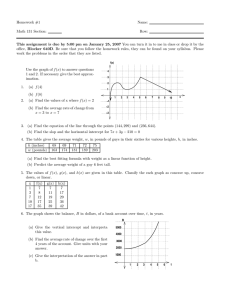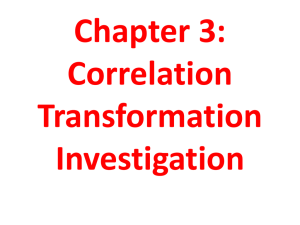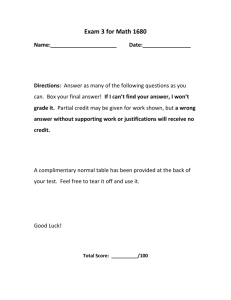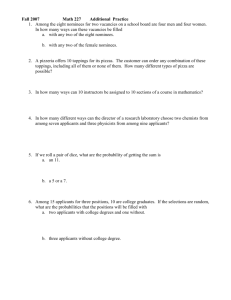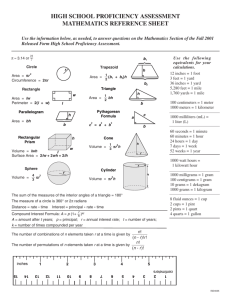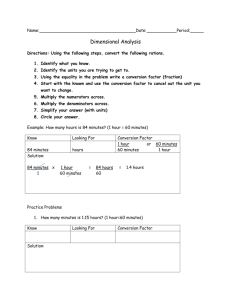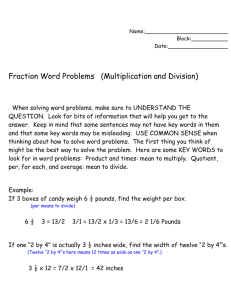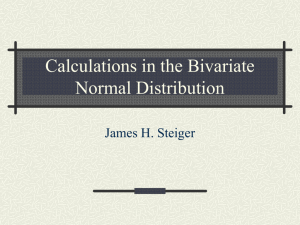Sample Exam 2(use mozilla firefox or save then open)
advertisement
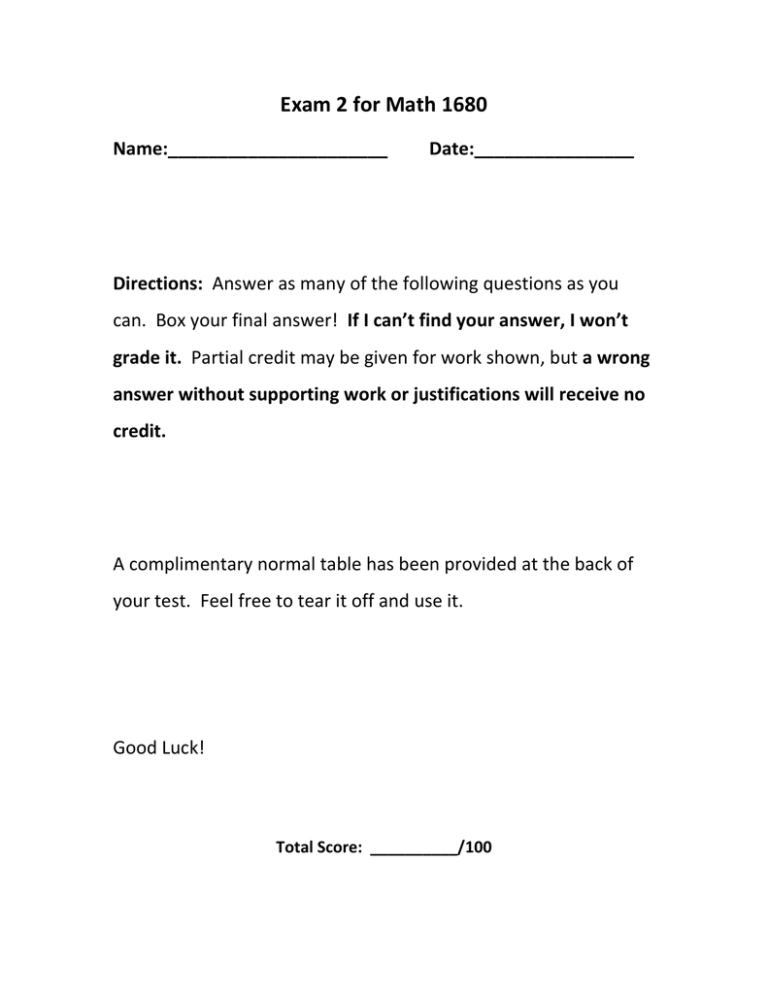
Exam 2 for Math 1680 Name:______________________ Date:________________ Directions: Answer as many of the following questions as you can. Box your final answer! If I can’t find your answer, I won’t grade it. Partial credit may be given for work shown, but a wrong answer without supporting work or justifications will receive no credit. A complimentary normal table has been provided at the back of your test. Feel free to tear it off and use it. Good Luck! Total Score: __________/100 2 Question 1 (15 points): State whether the example is a positive association, negative association, or a weak association. Offer a reason why your answer is correct. a) (5 points): Number of text messages sent vs. phone bill (assume no unlimited plans!) b) (5 points): Amount of exercise per week vs. body fat percentage c) (5 points): Distance to work vs. amount spent on gas 3 Question 2 (25 points): In a college statistics class, the comparison of height and weight for students results in the following summary. Average weight: 160 pounds Average height: 69 inches Correlation (r): 0.65 SD for weight: 25 pounds SD for height: 4 inches a) (8 points): Predict and give the RMS error for the height of a student weighing in at 185 pounds. b) (8 points): Predict and give the RMS error for the weight of a student who stands 66 inches tall. c) (9 points): Approximately what percentage of the students who are 66 inches tall weigh more than 140 pounds? 4 Question 3 (30 points): Calculate the five-statistic summary (averages, standard deviations, and correlation coefficient) for the pairs of data sets. If you use changes of scale for your calculations, make sure you state what the changes of scale are! a) (15 points) X Y 1 5 3 3 5 7 7 9 9 11 b) (15 points) A B -2 7 -4 5 -6 9 -8 11 -10 13 5 Question 4 (20 points): Use the five statistic summary from a hypothetical study on 14years olds to answer the following questions: Average daily sugar consumption: 130 grams Average weight: 155 pounds Correlation (r): 0.38 SD for sugar: 23 grams SD for weight: 15 pounds a) (10 points): Sketch a scatter plot of the data given. Be sure to include your ellipse! b) (5 points): Predict the weight of a 14-year old who consumes 150 grams of sugar daily. c) (5 points): Use your answer from b) to draw the regression line from sugar consumption to weight on your sketch from a). 6 Question 5 (10 points): Use the scatter plots to estimate the five-statistic summaries for the data set pair. 7 Question 2 (10 points): If two parents have 4 children, what is the probability that they have at least two girls? Assume that a new child is equally likely to be a boy or a girl, and that the genders of the children are independent. Question 3 (15 points): (Hypothetical) The Texas Lottery commission offers a game where players buy a ticket for $1 and mark off 5 numbers from a field of 37. Then they compare their 5 numbers with the 5 numbers drawn with replacement from a random generator. Players win prizes of increasing value if they match any two, three, four, or all five numbers. The typical prizes for each draw are as follows. Matches 5 of 5 4 of 5 3 of 5 2 of 5 Prize $7,500 $100 $4 $2 a) (7 points): What is the probability of winning the grand prize (matching all five numbers)? Question 4 (15 points): One ticket is drawn at random from each of the two boxes below: 1 2 3 4 5 6 1 2 3 4 5 6 a) (8 points): What is the probability that both of the numbers drawn are even? 8 b) (7 points): What is the probability that the sum of the two numbers is 6? Question 5 (15 points): a) (8 points): If I deal 3 cards off of a well-shuffled standard deck, what is the probability that the first card is an eight, the second card is a king, and the third card is another king? b) (7 points): If I deal 3 cards off of a well-shuffled standard deck, what is the probability that all three cards are aces? 9 Question 6 (10 points): we play a game where each of us roll a red die and a green die. If your red die shows a larger number than my red die and your green die shows a number larger than my green die, then you win. Otherwise, you lose. (For example, if you roll a red 4 and a green 3 to my red 3 and green 1, then you win. If, for example, you roll a red 6 and a green 2 to my red 4 and green 2, then you lose.) What is the probability that you win this game?
